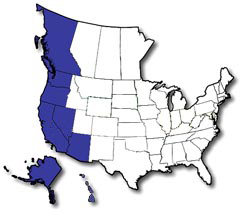Within its territory, WESTCARB identified the major stationary sources of CO2 such as power plants, oil refineries, and cement plants, and determined the potential for storing CO2 securely in deep geologic formations. WESTCARB’s work also included research on increasing terrestrial carbon storage through tree planting, conservation forest management practices, and removal of materials such as stunted undergrowth and brush that can fuel wildfires.

WESTCARB's territory included Alaska, Arizona, California, Hawaii, Oregon, Nevada, Washington, and the province of British Columbia.

